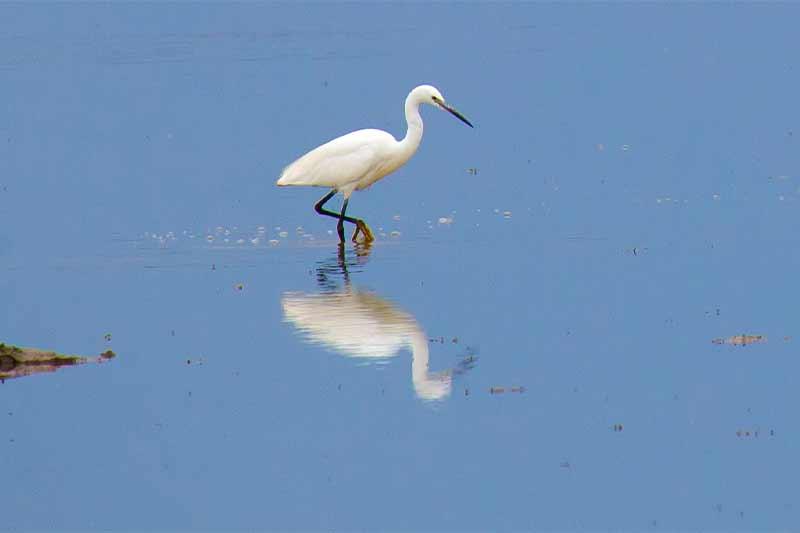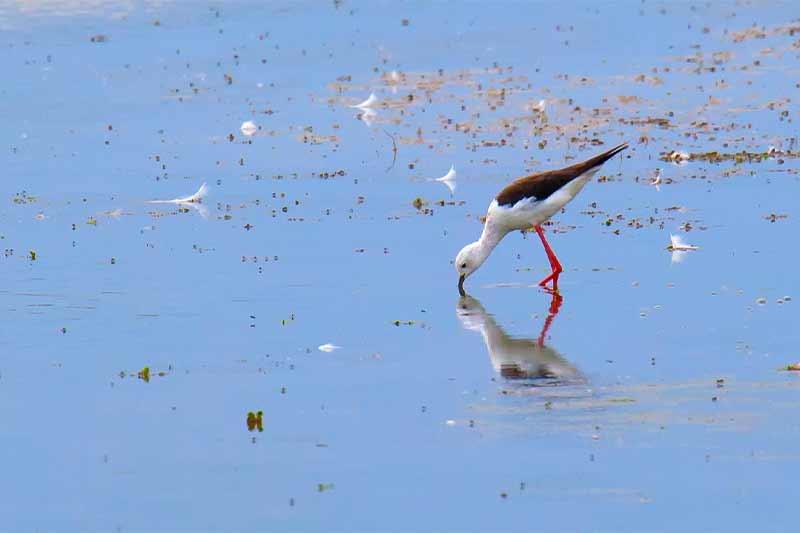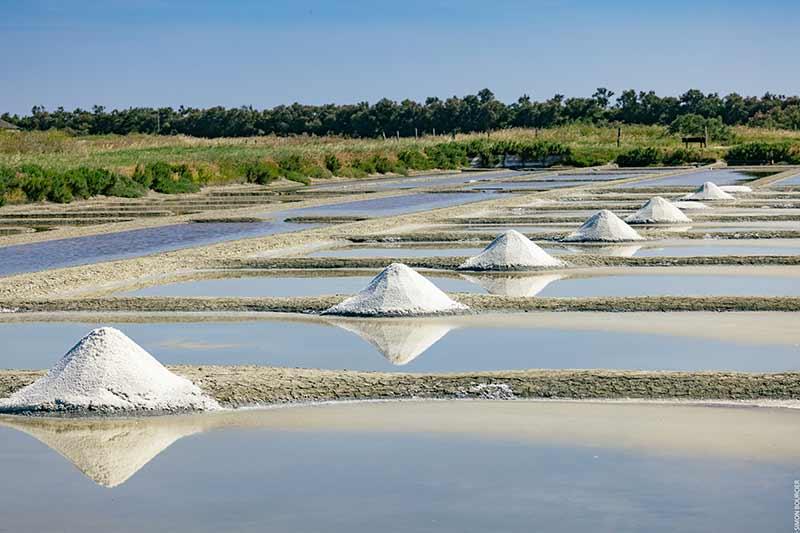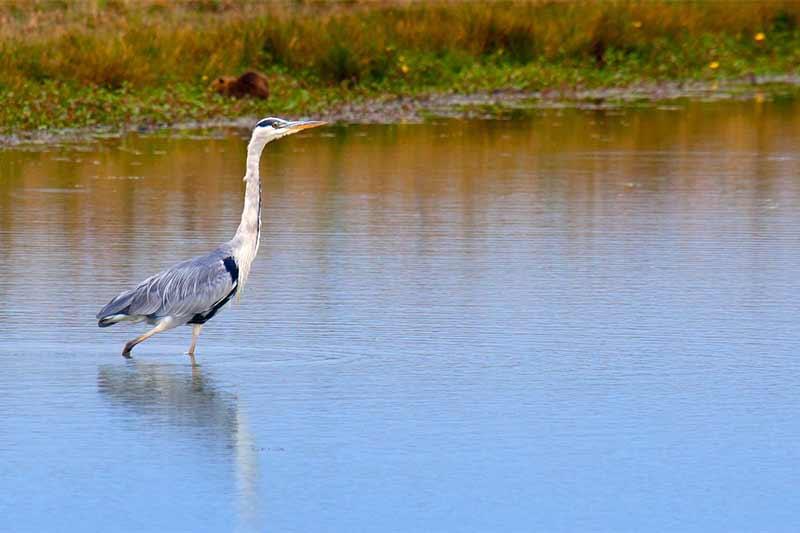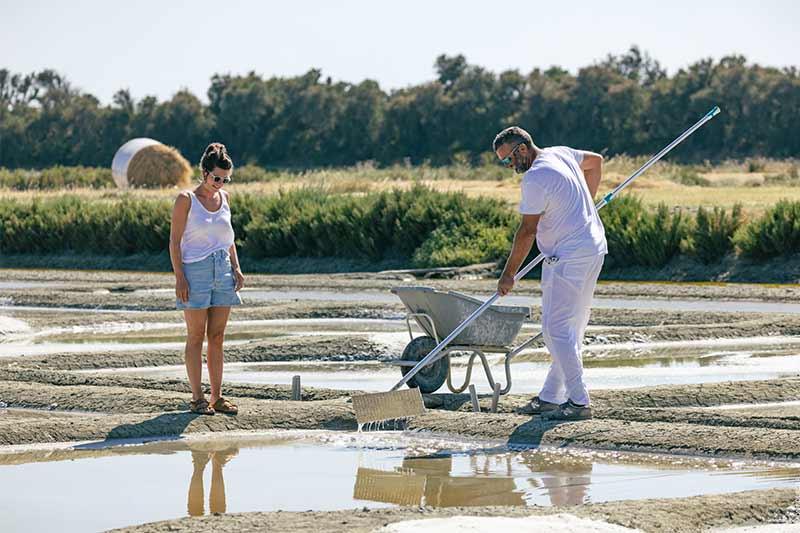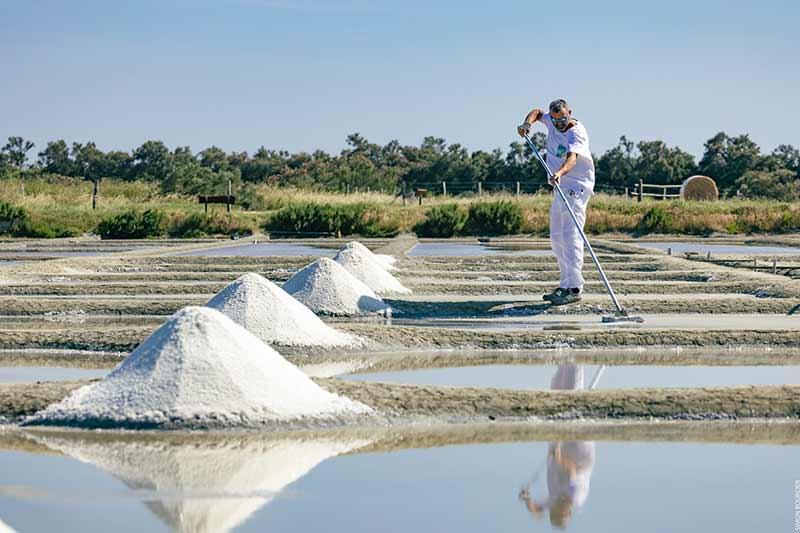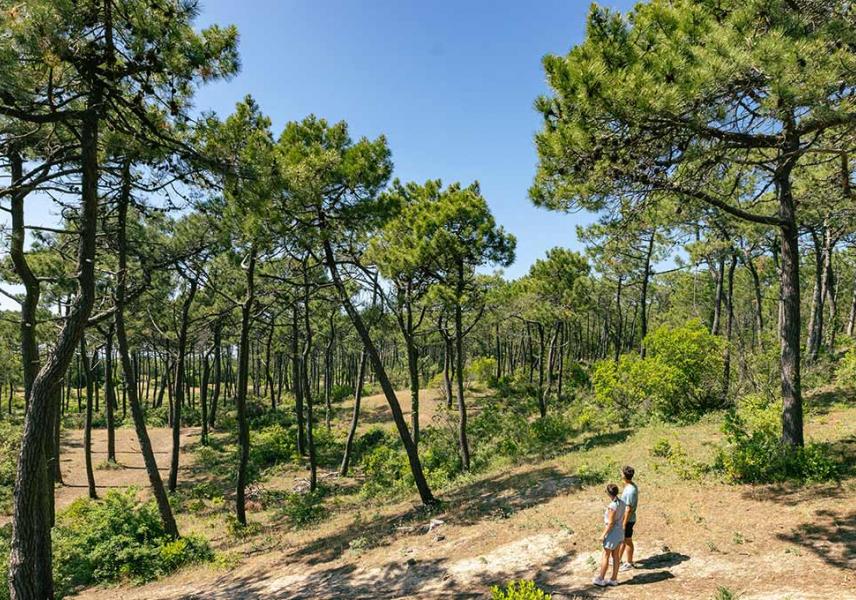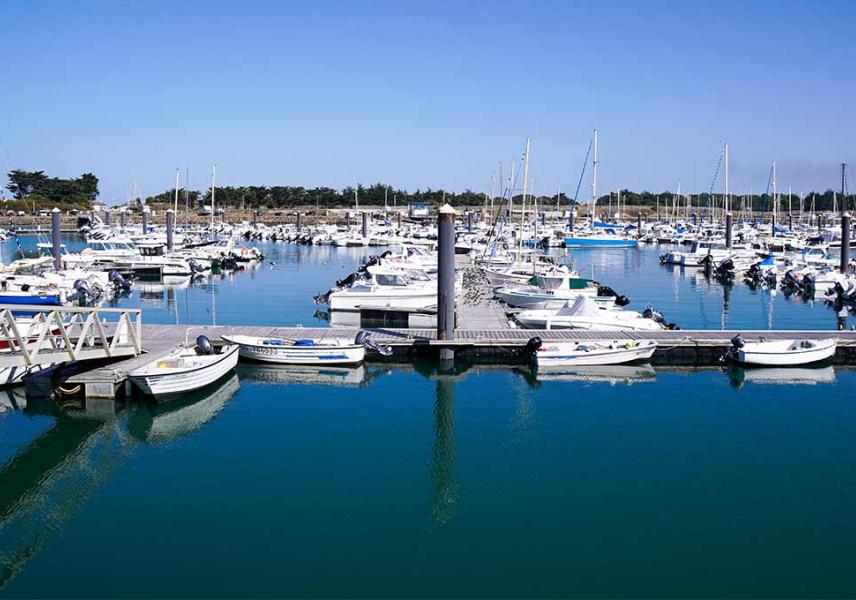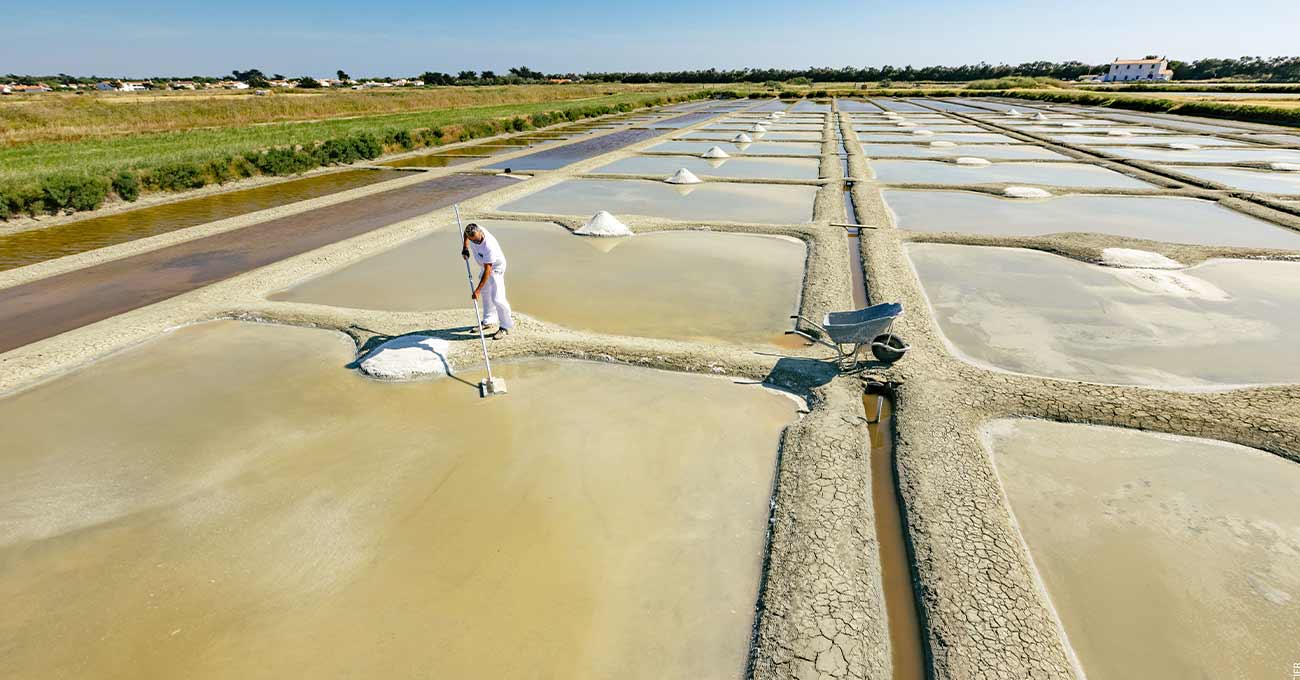
The Salt marshes
Noirmoutier salt, fleur de sel, and salt workers
THE WHITE GOLD OF NOIRMOUTIER ISLAND
Salterns are typical of the scenery on Noirmoutier Island, covering a third of the island. They were shaped by man over the course of centuries. The hundred or so salt makers on the island perpetuate their high-quality ancestral know-how. The 100% natural salt is harvested in accordance with traditions. Dive into the heart of this magical world.
SALT MARCHES, AN INCREDIBLE NATURAL RESOURCE
There is something magical about seeing salt emerge from the clay of the marshes:
1. The seawater circulates through a network of meticulously maintained channels and pools. As the water evaporates, the concentration of salt slowly rises over a period of 48 hours from a concentration of 35, to over 300 grams per litre of seawater.
2. The coarse salt then crystallizes and settles at the bottom of clay pools called "œillets", where workers harvest the salt. When the summer is at its hottest and an easterly wind blows, delicate crystals of fleur de sel (fine sea salt) shimmer at the surface of the œillets. Crystallized at the surface of the water, it is white with a unique flavour.
3. Gently collected using a lousse (a sort of skimmer), the salt is then collected in baskets before being place onto tables and allowed to dry naturally under the sun.
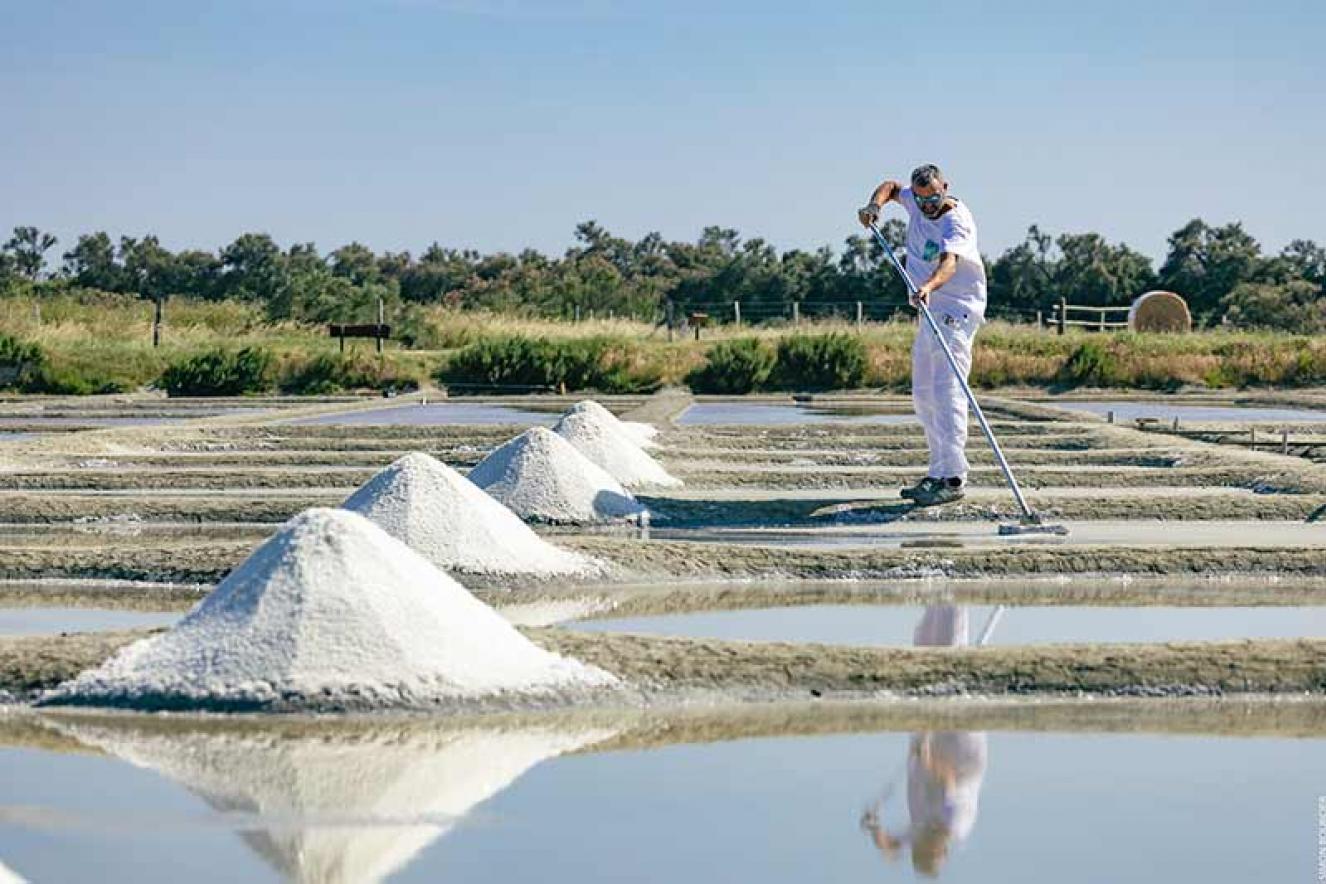
©Office de Tourisme Ile de Noirmoutier - Vendée Expansion - Simon Bourcier
A QUICK HISTORY LESSON
Although salt was already produced in ancient times, tradition holds that the development of the salt marshes and the salt trade were the work of Saint Philibert when he founded the abbey in the 7th century (on the site of the present-day church Saint Philbert). The booming trade in this “white gold” during the 16th to 18th centuries was a real advantage for the island’s economy up until the 1970s. After a period of decline (just 34 salt makers in 1990), the revival has since been assured by young producers.
Today, 3,000 œillets are operated by about 100 salt makers, some of them members of the cooperative, harvesting the pure “white gold” by traditional methods. Close to 3,000 tonnes of sea salt are harvested in a normal year, although the yield is completely dependent on the weather.
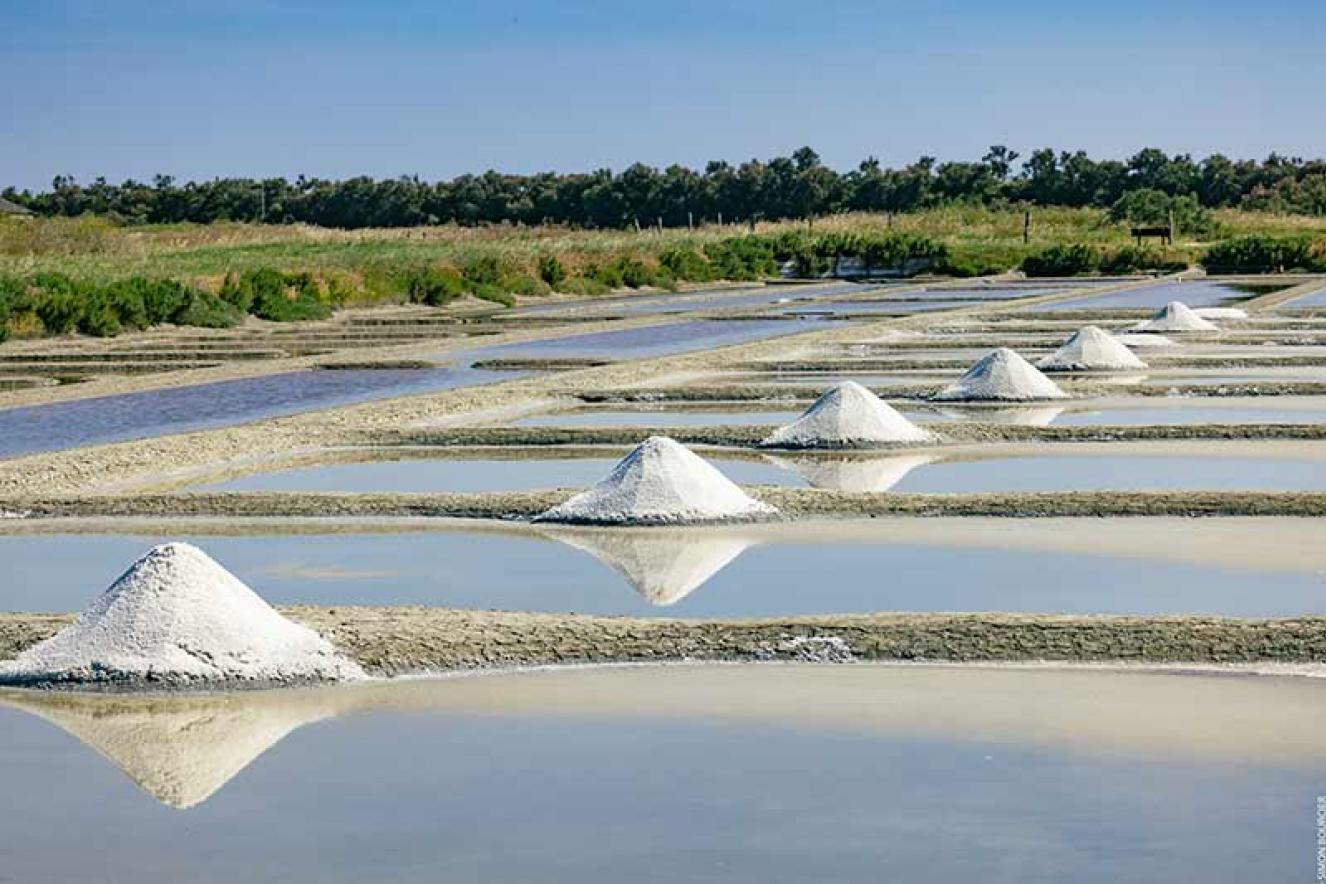
©Office de Tourisme Ile de Noirmoutier - Vendée Expansion - Simon Bourcier
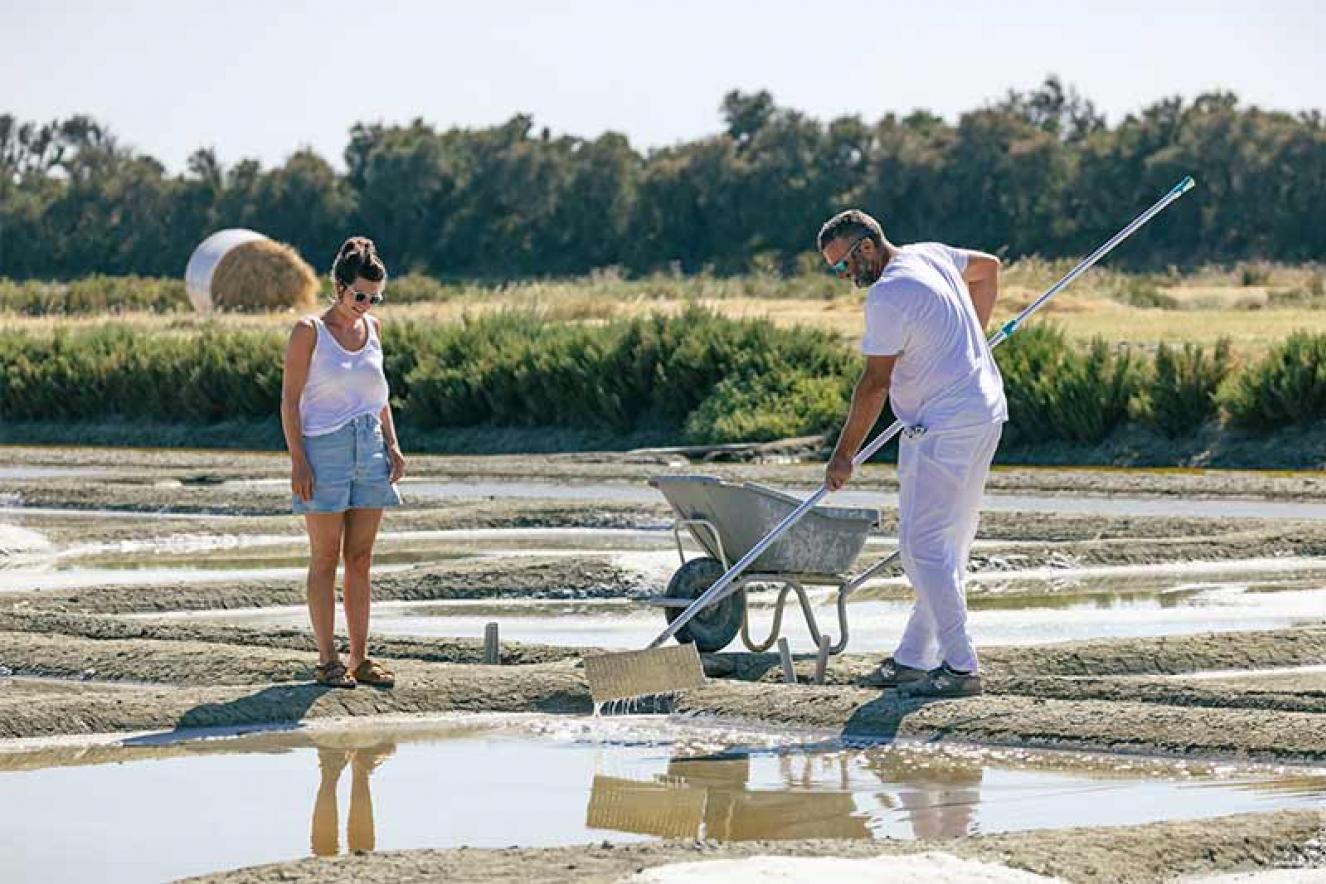
VISIT THE SALTERNS IN SUMMERTIME
Interested in watching the salt makers employ traditional techniques? You can do it all summer long and into early autumn on Noirmoutier Island! Take advantage of a guided tour, or simply stop outside the salt huts lining the roads and attracting other curious onlookers. The producers are waiting to share their know-how and sell you their goods direct.
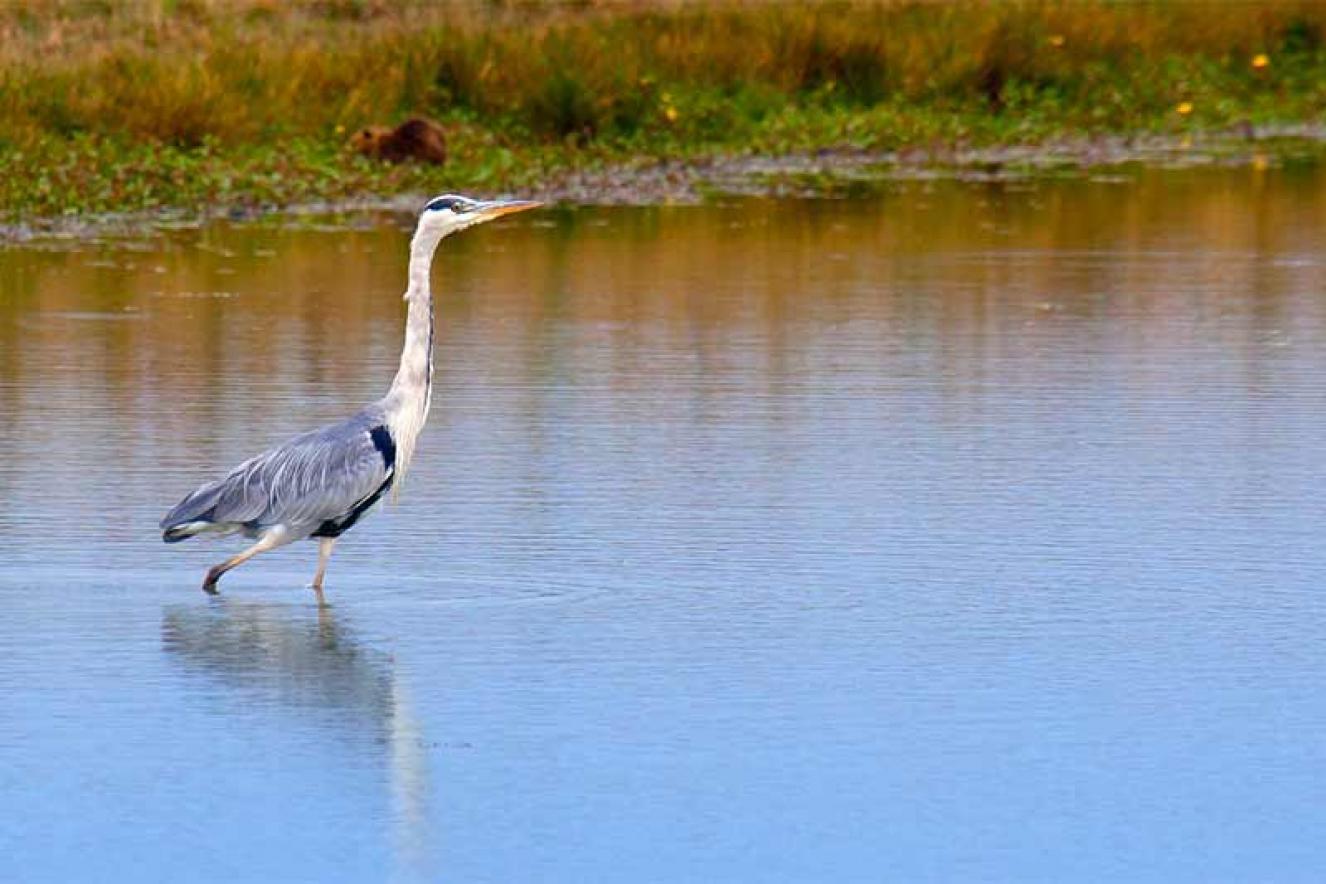
WHAT ABOUT LOW SEASON?
In low season, the salterns are not in operation, so they return to their status of salt marshes. They are then used for livestock farming along the raised sections separating the pools and ditches. A large portion of the land, formerly reclaimed from the sea, is still irrigated using saltwater. Seawater usually circulates to meet the needs of salt farming, shellfish farming and fish farming. The place where it stops circulating is where the river marsh begins, covering just 10 or so hectares on the island.
Frequented by hundreds of species of sedentary and migratory birds, that alternate depending on the season, the salt marshes offer multiple possibilities for observing wildlife. Grey herons, gulls, little egrets and sacred ibises can only be admired if you are ready and willing to respect the marshland and remain silent.
DID YOU KNOW?
- Calorges are dry stone huts where salt makers would rest during the hottest hours of the day and where they would store their tools.
- Noirmoutier Island’s mills, made almost entirely of wood, were designed to drain the rainwater at the end of winter to allow salt makers to prep their salterns. They were built around 1920 and have since been abandoned in favour of motor drive pumps.
- Esseppes are flat stones installed vertically near the entrance to the meadows. They are typically pierced with three round holes, into which wooden rods were inserted for use as a gate.
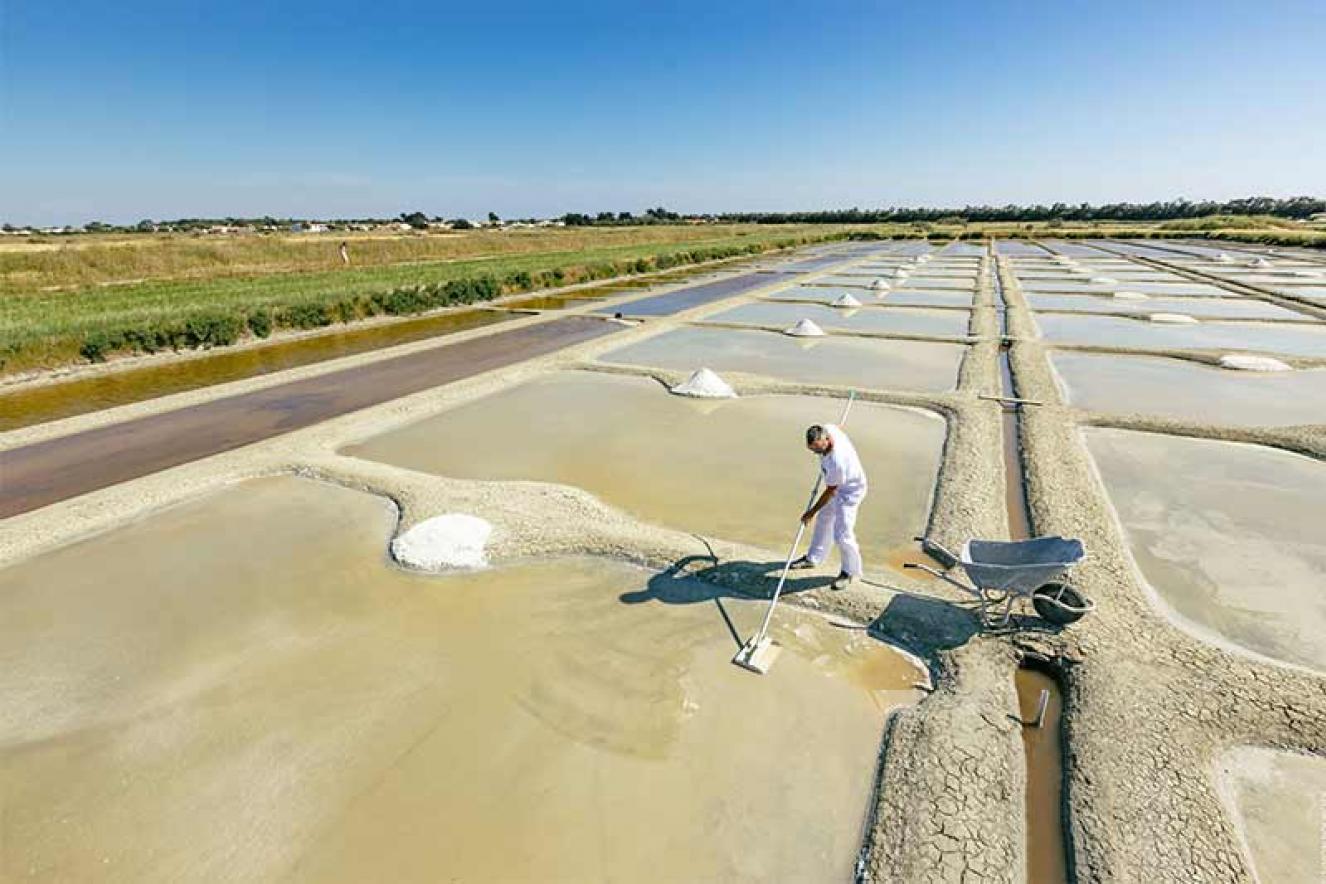
©Office de Tourisme Ile de Noirmoutier - Vendée Expansion - Simon Bourcier

©Max Coquard - Bestjobers
VANINA, A YOUNG SALT WORKER, EXPLAINS “a world apart”
“Salt worker since 2010, I'm fulfilling my passion for this job in the heart of nature.
To make a living from my work, I don't count the hours. I look after 25 carnations on my own, I draw the salt and pick the flower of salt as soon as the conditions are right... even when it's very hot! I ask myself on rainy days... will I harvest enough salt this year?
Despite the physical and weather constraints, I love my job. I find it rewarding and in line with my values. The only noises that 'disturb' me are the melodious songs of the marsh birds.
I love picking the fleur de sel because it requires delicacy and dexterity.
I also like knowing that I'm helping to protect the environment, to perpetuate an ancestral craft, done by hand, and to produce a natural, local salt, sel de Noirmoutier".


